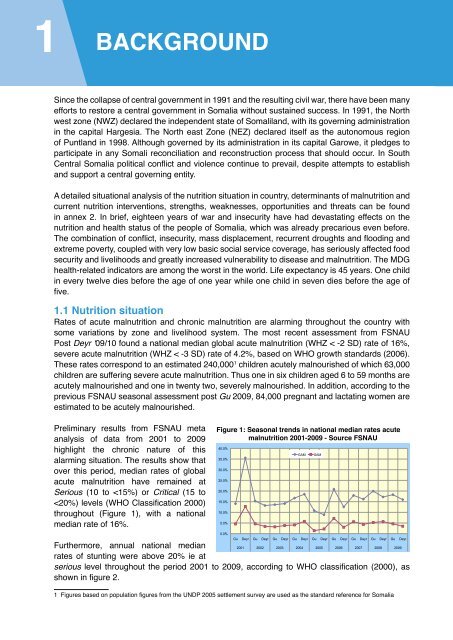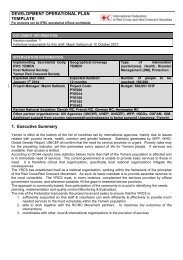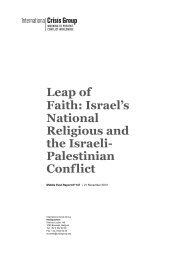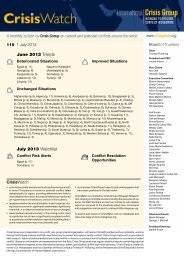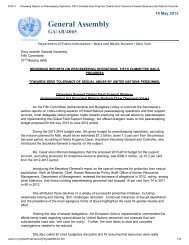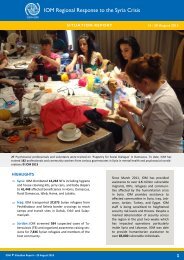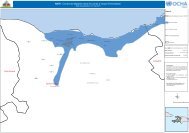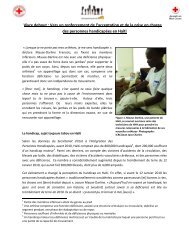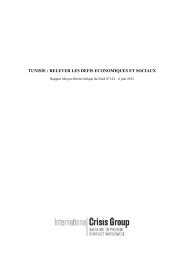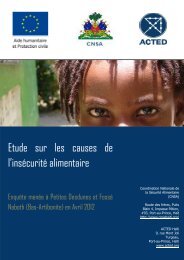SOMALI NUTRITION STRATEGY 2011 – 2013 - ReliefWeb
SOMALI NUTRITION STRATEGY 2011 – 2013 - ReliefWeb
SOMALI NUTRITION STRATEGY 2011 – 2013 - ReliefWeb
Create successful ePaper yourself
Turn your PDF publications into a flip-book with our unique Google optimized e-Paper software.
1<br />
BACKGROUND<br />
3<br />
Since the collapse of central government in 1991 and the resulting civil war, there have been many<br />
efforts to restore a central government in Somalia without sustained success. In 1991, the North<br />
west zone (NWZ) declared the independent state of Somaliland, with its governing administration<br />
in the capital Hargesia. The North east Zone (NEZ) declared itself as the autonomous region<br />
of Puntland in 1998. Although governed by its administration in its capital Garowe, it pledges to<br />
participate in any Somali reconciliation and reconstruction process that should occur. In South<br />
Central Somalia political conflict and violence continue to prevail, despite attempts to establish<br />
and support a central governing entity.<br />
A detailed situational analysis of the nutrition situation in country, determinants of malnutrition and<br />
current nutrition interventions, strengths, weaknesses, opportunities and threats can be found<br />
in annex 2. In brief, eighteen years of war and insecurity have had devastating effects on the<br />
nutrition and health status of the people of Somalia, which was already precarious even before.<br />
The combination of conflict, insecurity, mass displacement, recurrent droughts and flooding and<br />
extreme poverty, coupled with very low basic social service coverage, has seriously affected food<br />
security and livelihoods and greatly increased vulnerability to disease and malnutrition. The MDG<br />
health-related indicators are among the worst in the world. Life expectancy is 45 years. One child<br />
in every twelve dies before the age of one year while one child in seven dies before the age of<br />
five.<br />
1.1 Nutrition situation<br />
Rates of acute malnutrition and chronic malnutrition are alarming throughout the country with<br />
some variations by zone and livelihood system. The most recent assessment from FSNAU<br />
Post Deyr ‘09/10 found a national median global acute malnutrition (WHZ < -2 SD) rate of 16%,<br />
severe acute malnutrition (WHZ < -3 SD) rate of 4.2%, based on WHO growth standards (2006).<br />
These rates correspond to an estimated 240,000 1 children acutely malnourished of which 63,000<br />
children are suffering severe acute malnutrition. Thus one in six children aged 6 to 59 months are<br />
acutely malnourished and one in twenty two, severely malnourished. In addition, according to the<br />
previous FSNAU seasonal assessment post Gu 2009, 84,000 pregnant and lactating women are<br />
estimated to be acutely malnourished.<br />
Preliminary results from FSNAU meta<br />
analysis of data from 2001 to 2009<br />
highlight the chronic nature of this<br />
alarming situation. The results show that<br />
over this period, median rates of global<br />
acute malnutrition have remained at<br />
Serious (10 to


